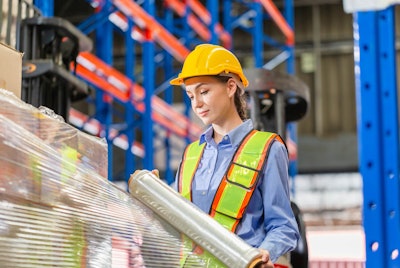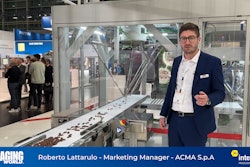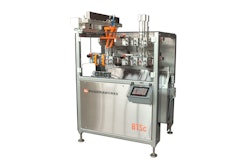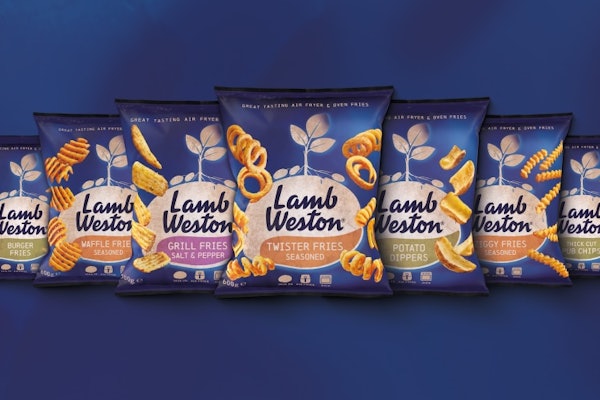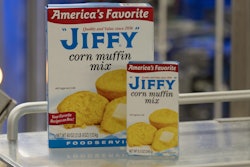End-of-line packaging is the final stretch in the race to get loads out the door. Stretch wrappers apply a final stretch to the final stretch. Then there’s the longer race of getting loads to their final destination; call that the finish line. Winning is when loads cross the finish line intact and undamaged. That won’t happen if the stretch wrappers don’t apply the right film in the right manner.
Load integrity is the main justification for investing in stretch wrappers. An absence of that integrity results in missed sells and foregone profits. Additionally, goodwill throughout supply chains suffers because compromised loads pose risks to personnel and impose costs for clean-up and/or disposal.
Another justification is cost-savings in labor. But benefits don’t accrue only to the employer; additionally, there is a win-win aspect. Workers are spared repetitive exertion and its potential long-term physical and mental effects. Those same workers can be reassigned more productively.
A justification that might not be as self-evident are savings stemming from the stretch film. With mechanization, film cost-per-load goes down for a variety of reasons. Film, for example, is applied with programmed consistency, an economy in itself. Film can be purchased in larger rolls and wider webs, resulting in quantity purchase discounts. Machines require less frequent stoppages to change larger rolls of film, adding to productivity.
Regarding the acquisition of stretch wrappers—whether first-time, additional, or replacement wrappers—the decision-making process is multi-faceted and complex. That’s because stretch wrappers are capital expenditures carrying long-term consequences. While conceding that approaches can vary, it’s nonetheless axiomatic that they start with a determination of load characteristics. They include package types and materials, plus their unitized sizes, weights, and configurations. For example, those characteristics applied to a production facility can be different than those applied to a distribution center. The former’s loads are likely to be uniform and the latter’s loads are likely to be mixed.
Stretch wrappers are classifiable as manual, semi-automatic, and fully automatic. The differences reflect the amount of human involvement in the fundamental steps required to get a load wrapped. The steps are as follows: the load arrives at the machine, the film is attached to the load, the machine starts the wrapping cycle, the machine ends the wrapping cycle, the film is cut from the roll, the cut edge of the film is pressed against the load, and the wrapped load leaves the machine. Generally, operators are involved with every step on a manual machine and with some of the steps on a semi-aitomatic machine. With fully automatic equipment, operator involvement is at a minimum.
Turntable stretch wrappers are the most utilized style due to their diverse applicability. The turntable is a circular platform on which the load sits. A roll of film is mounted vertically alongside, on a mast. After the film is attached to the bottom of the load, wrapping is performed as the turntable rotates and the roll of film travels up the mast and then back down.
With turntable operations, loads are in motion, so during that time they need to remain stable and intact. Loads that can be challenging include those that are (comparatively) lightweight, or tall, or non-interlocking. Rotation speed needs to be adjusted accordingly. Another option is to select turntable stretch wrappers that are equipped with a metal plate that presses against the top of the load for stability as they turn.
Straddle stretch wrappers employ a mechanical arm or other means that apply film while rotating around a stationary load. The aforementioned challenges presented by loads in motion are thus avoided. Theoretically, straddles can operate at speeds greater than what’s practical with turntables, however they require a larger footprint.
Ring (or orbital) stretch wrappers have a track shaped in a vertical ring that houses the roll of film. The load, typically suspended on the forks of a forklift, is inserted within the middle of the ring. The roll rotates around the track, applying film over, around, and under the pallet. Orbitals are not used for tiered, patterned loads. Rather, they are popular for items that are palletized singularly or in small quantities, such as large engine motors and carpet rolls, respectively.
Ring straddle stretch wrappers embody features of the last two discussed types. The ring track, to which the film roll is attached, is positioned like a halo above the load at the start of the cycle. The ring then descends around a stationary load. The load is wrapped, bottom-to-top, as the roll rotates around the ring, while the ring ascends back to its starting position. It’s a high-speed operation, but for limited applications. A major one is paper products, such as towels and tissue.
Regardless of classification and type, the performance of stretch wrappers never can be divorced from the performance of the applied stretch film. Stretch film is not a commodity. To the contrary, it is an engineered material that should be purchased against well-devised specifications. Particulars include gauge, puncture-resistance, pre-stretch, cling, and optical qualities—just to name a few. In the final analysis, machine and film are a tandem. Together, they must produce the satisfactory degree of load containment.
Sterling Anthony, CPP, consults in packaging, marketing, logistics, and human-factors. A former faculty member at the Michigan State University School of Packaging, his contact info is:100 Renaissance Center, Box-176, Detroit, MI 48243; 313/531-1875; [email protected]
